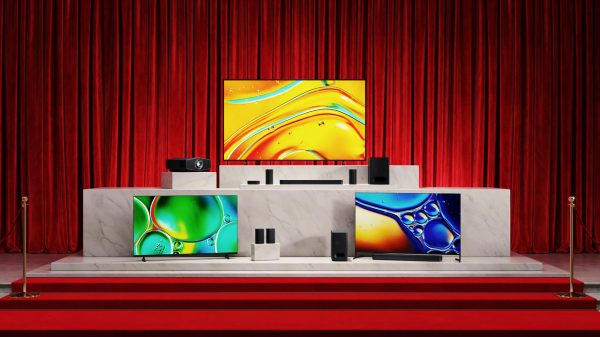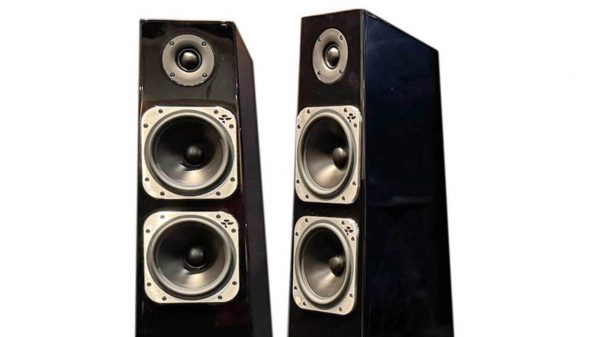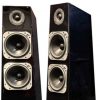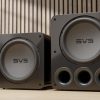While listening to a record the other day with my youngest daughter, the conversation turned to why people still listen to vinyl when streaming is “clearly so much better” and that Taylor Swift only made a record for Record Store Day 2023 because she wants older people to take their kids to her very expensive concerts; I took that as a not-so-subtle hint.
We are going to see Orville Peck, The Pixies, and Depeche Mode (October in Brooklyn) this year but that didn’t really soften the blow when we told her that spending $6,000 on 4 tickets for Taylor Swift was not going to happen.

“Do you know who invented the turntable?” I asked her as she walked around the den holding the jacket of the recent Craft Recordings Miles Davis release.
“Not Taylor Swift.”
“That would be correct.”
“My teacher told us that it was Thomas Edison. Or maybe Billy Madison. I’m confused.”
TikTok needs to be banned.
“Thomas Edison did not invent the turntable. Edison did make significant contributions to sound recording and playback, including the invention of the phonograph, but he did not invent the turntable as we understand it today.”
“Edison’s phonograph, patented in 1878, was a mechanical device that used a rotating cylinder covered in tinfoil to record and reproduce sound. It had a hand-cranked mechanism to rotate the cylinder, and a stylus traced the grooves on the cylinder, producing sound vibrations that were amplified by a horn.”
“The turntable, on the other hand, refers to the rotating platform on which vinyl records are played.”
“So how do you know it wasn’t Taylor Swift?”
“Have you ever heard of Emile Berliner?”
“Is he on TikTok or YouTube?”
Emile Berliner
Emile Berliner (1851-1929) was a German-born inventor, engineer, and entrepreneur who made significant contributions to the fields of sound recording and communication. He is best known for his invention of the gramophone, a device that played flat disc records.
Born on May 20, 1851, in Hanover, Germany, Berliner immigrated to the United States in 1870. He initially worked as a merchant and bookbinder but soon turned his attention to inventing. In 1887, Berliner developed a new method of sound reproduction, which he named the gramophone.

Berliner’s gramophone used flat disc records made of a zinc disc coated with a compound called shellac. The records had spiral grooves that were created by a cutting stylus. The sound vibrations from the stylus were transmitted through a diaphragm and a horn, resulting in amplified sound. The gramophone offered several advantages over Edison’s cylinder-based phonograph, including easier production, longer playing time, and the ability to mass-produce records.
In addition to the gramophone, Berliner also made notable contributions to the development of the microphone and telephone technologies. He invented the carbon microphone, which became widely used in telephony and early sound recording. Berliner’s improvements to the telephone transmitter greatly enhanced its performance and efficiency.
Berliner was also an astute businessman and established the Berliner Gramophone Company in 1895. The company later merged with the Victor Talking Machine Company, forming the Victor Talking Machine Company, which became a major player in the phonograph industry.
Emile Berliner held numerous patents throughout his career and made significant advancements in sound recording and communication technologies. His invention of the gramophone and disc records laid the foundation for modern turntables and the widespread consumption of recorded music. Berliner’s contributions to the field of audio technology continue to influence the way we enjoy and experience music today.
The Most Significant Turntables
Do you remember your first turntable?
I inherited a Thorens TD-145 from my parents in 1983 as part of my Bar Mitzvah gift and it gave me over a decade of service before I upgraded to an Audiomeca Romance table designed by Pierre Lurne of Goldmund.
Looking back I’m not entirely convinced that it was an upgrade but I did trade it in when I purchased a Michell Orbe SE in 1998; that table absolutely was a significant improvement and a great platform for a Wilson Benesch ACT 0.5 Tonearm and Benz Micro H2.0 high-output cartridge.
My ex-wife forced me to sell it during our rather quick and bloody divorce and it was painful to let that one go. I have never owned anything better and it’s unlikely that I would ever spend that kind of money on a turntable and cartridge again; especially not with college and private school tuition.
Three restored Thorens tables create wonderful music at home now and I’m not entirely sure that changing them would make a lot of sense. I also own a Yamaha YP-701 and NAD C 588.
Listening to records with my daughter sparked a different kind of conversation with some of our staff and my circle of audiophile friends.
Which tables were truly significant?
We’ve included some tables from the late 1900s and the first part of the 20th century because they were indeed, very significant.
We could easily publish a list of the “best” turntables available right now but 99% of the planet could never afford them and will never have the opportunity to listen to one. This feels like a more interesting discussion.
What are we missing from this list? Please let us know.

Edison Phonograph
The Edison Phonograph, invented by Thomas Edison in 1877, is considered the earliest form of recorded sound playback. It used a cylindrical wax cylinder and a hand-cranked mechanism, laying the foundation for future turntable designs.

Victor Talking Machine
Introduced in 1906 by the Victor Talking Machine Company, this turntable became an iconic symbol of the early 20th century American music industry. It used a spring-driven motor to rotate a flat disc, and its signature “His Master’s Voice” logo became an enduring symbol of high-quality audio.

Philips 212 Electronic
The Philips 212 Electronic, introduced in 1965, was one of the first commercially successful turntables to feature an electronic speed control mechanism. It marked a shift from manual speed adjustment to accurate electronic speed regulation, setting a precedent for future turntable designs.

Garrard 301
The Garrard 301, introduced in 1954, was a breakthrough turntable known for its innovative idler-wheel drive system. It offered superior speed stability and became a benchmark for audio quality, influencing turntable design for years to come.

Acoustic Research XA
Introduced in 1961, the AR XA was only $58 and what made it unique was how it handled vibration and how low its rumble measured. The package did not come with a cartridge but the price included the table, tonearm, stylus gauge, and dustcover.
The most interesting aspect of the design was its mounting system; Edgar Villchur realized that instead of attaching the motor, tonearm, and lightweight platter to the table’s top plate, it made more sense to mount the platter and tonearm to a sub platform which was suspended underneath the top plate at 3 very distinct points with damped springs with a low resonant frequency.
By doing so, the tonearm and record were isolated from footfalls and other acoustic vibration. Thorens and Linn would incorporate these concepts into their future tables.

Thorens TD-150
In 1965, the Thorens TD 150, an inconspicuous little turntable, came on the market and thus started a technical revolution in record player manufacturing. For the first time, a spring-suspended sub-chassis with an inner platter driven by a flat belt was used in a mass-produced unit. The principle proved to be very successful and found many imitators in the years since.

Thorens TD-124
The Thorens TD-124, released in the late 1950s, is highly regarded for its engineering excellence and advanced features. It featured a heavyweight platter, idler drive, a unique floating suspension, and a durable build, setting new standards for turntable performance and reliability.

Technics SP-10
The Technics SP-10, introduced in 1970, was a groundbreaking direct-drive turntable known for its exceptional speed stability and accuracy. It became popular among professional audio engineers and studios, setting a benchmark for precision playback.

Linn LP12
The Linn LP12, introduced in 1972, played a crucial role in the resurgence of vinyl and the growth of the high-end audio market. It featured innovative suspension and vibration isolation techniques, setting new standards for turntable design and sound quality.

Technics SL-1200
The Technics SL-1200, launched in 1972, is one of the most significant turntables in history. It revolutionized DJ culture and became the industry standard for its direct-drive system, rugged build quality, and precise pitch control.

Rega Planar 3
The Rega Planar 3, first introduced in the 1970s and continuously refined over the years, became a symbol of simplicity, affordability, and excellent sound quality. It made high-quality audio accessible to a broader audience and became a popular choice among vinyl enthusiasts.

Dual 1219
The Dual 1219, released in the 1970s, was one of the first turntables to incorporate automatic features such as auto-start, auto-stop, and automatic tonearm return. It introduced convenience and automation to the turntable market, shaping the future of consumer audio.

Pro-Ject Debut Carbon
The Pro-Ject Debut Carbon, introduced in the late -1990s, played a crucial role in making high-quality turntables more affordable and accessible. It offered impressive sound quality and build quality at a budget-friendly price, attracting a new generation of vinyl enthusiasts.
Related: View all recent turntable articles



















































Michael
July 16, 2023 at 2:51 pm
I always wonder why most vinyl experts forget to mention here in this context the laser-turntable from ELP Corp., Japan, based on the prototype from Finial, USA.
Ian White
July 17, 2023 at 2:33 pm
Michael,
This table always fascinated me. I saw it at a trade show once and never again.
I might have to add it to the list.
Best,
Ian White
ORT
July 16, 2023 at 3:53 pm
Over the last couple of years I have purchased several ‘tables that caught not just my eye but what’s left of my soul.
Bestest fully
automatic turntable: Dual 1246
Bestest Beatles Tribute: Beatles Debut Carbon Esprit DB SC
Honorable Mention: Beatles Singles Debut
Beatles Essential Sgt. Pepper 50th
Overall Favorite ‘table: Pro-Ject
X2 in Walnut with Sumiko Moonstone
cartridge.
They are all mine and all paid for. When I am gone my children get them. The X2 is my favorite because of (as Auric Goldfinger might say) “…divine heaviness”.
I prefer vinyl for the memories associated with the medium. In my world, it does not “sound better” but there are certainly times when it “feels better”. Memories will soothe the end as death is but the birthday of Eternity.
I tried to make this pedestrian prose line up but who knows if it will look as intended or worse.
ORT
Ian White
July 17, 2023 at 2:32 pm
ORT,
I am very happy with my restored Thorens tables. My NAD and Yamaha are also working really well.
I did decide on a my final table after a few things sell. Michell Gyro SE with the new Michell Technoarm. Already have the cartridge and my previous experience with the Orbe SE was superb. Ex-wife made me sell it.
Ian
Jeffrey Keith Stratton
July 23, 2023 at 9:40 am
I bought my first hi-fi rig 50 years ago and insisted on an AR-XA turntable. I later replaced it with an AR-XB. A Phillips GA212 a GA312 and a couple of Japanese direct dive tables including a Mitsubishi LT-22 linear tracking table lead me to…David Fletcher’s brilliant Sota Sapphire! Outfitted with Fletcher’s Sumiko Premier(Jelco) MMT tonearm. This table cured the feedback problems I experienced with direct dive tables. The music emanates from a black hole. The Sota Sapphire take Edgar Vilchur’s seminal AR design and turns it upside down…literally! Inverted bearing, synthetic sapphire bearing thust plate. The suspension is not placed on top of dampened springs but suspended (hangs) from the springs there by utilizing pendulum effect to self correct. Too many innovations based on science to list them all. America’s first super premium turntable is still in production in it’s sixth series. I’ve owned mine since 1990 and it’s beeny daily driver all this time and never failed me?
Ian White
July 23, 2023 at 1:42 pm
Jeffrey,
Agree on the Sota. I’ve heard more than a few over the years and the performance was outstanding. I think it offers amazing value as well. The wood plinths are really beautiful.
Best,
Ian
tonyE
August 14, 2023 at 7:32 am
Nakamichi Dragon CT self centering table. No one has done it since.
Noam Bronstein
January 28, 2024 at 3:27 pm
Good list, Ian. If it could stretch a bit longer, I’d add the Oracle Delphi and Micro-Seiki 1500, if only because their design and aesthetic continue to influence so many modern decks.
All the best,
Noam
Ian White
January 28, 2024 at 3:53 pm
Noam,
Both solid options. I’ve listened to the Oracle a few times. Beautiful deck. The Micro-Seiki has a lot of fans.
Best,
Ian White
Ken Sargent
January 30, 2024 at 2:52 pm
Is this listing a compilation of quality playback devices, or significance? If, as the title suggests, the subject matter is significant, you really need to include the lousy-quality BSR changers. Those things were sold in audio stores by the bazillion, and quite awful in terms of audio quality. However, lower in price than even the AR table,it was the first record player I could afford that was equipped with a magnetic cartridge that I could afford. I suppose the VM changer that was standard equipment in most stereo consoles should also be considered; there were tons of those things produced.